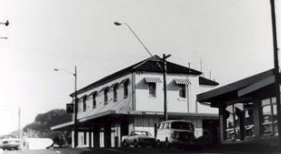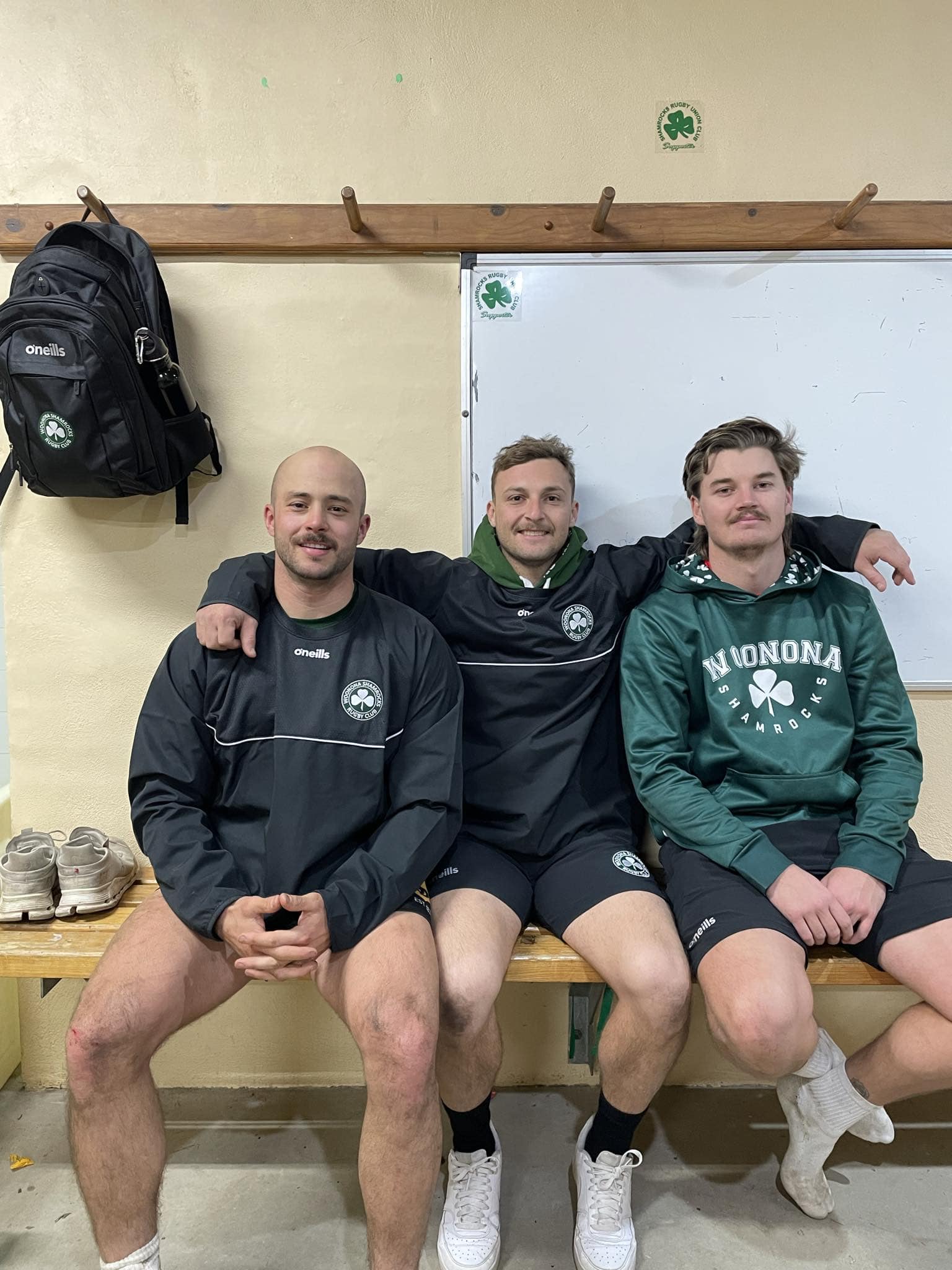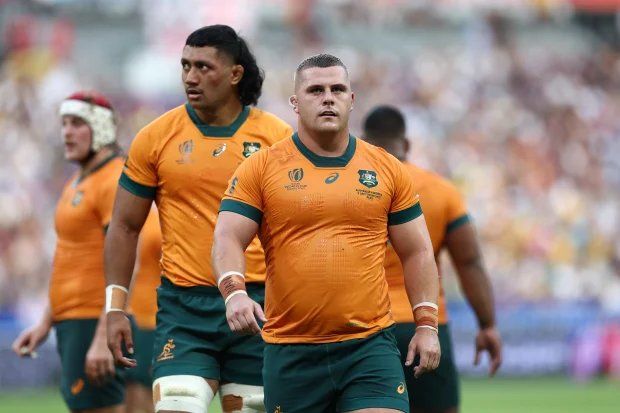The Birth of a Rugby Club: How the Woonona Shamrocks Began
Woonona Shamrocks began with the amalgamation of two local ‘B’ grade teams – the Shamrocks RUFC and Woonona Surf RUFC. The Shamrocks rugby team that was formed in the mid sixties had its origins in the youth group of Bulli Catholic parish. Due to the “reputation” that the team had earned for its “robust” and “undisciplined” style of play in the church competition, it appears that the priest at the time suggested they move to Corrimal Parish where a branch of YCW (Young Christian Workers) had been formed.

The team strip consisted of a white Guernsey with a huge red shamrock on the back with black shorts and red and white striped socks. The IDRU extended an invitation to the Shamrocks to enter a team in its annual pre-season Knock-Out Competition. Shamrocks won this and as a result were then invited to play in the ‘C’ Grade competition that year. Shamrocks went on to be 1966 ‘C’ Grade Minor Premiers only to lose the Grand Final 3-0. They continued this success into 1967 – winning the Knock-out, minor premiership and the Grand Final to become premiers in only their second year. They retained the minor premiers’ tag in 1968, to make it three in a row, and though they missed out on a Grand Final that year they were raised to ‘B’ grade status for the 1969 competition.
The Woonona Surf team was formed in 1968, by surf club members who wanted to extend the camaraderie that they had developed as lifesavers at the Woonona Surf Club. Their aim was to keep the summer team together during winter, not only for social reasons but to maintain their fitness levels for the rigours of the summer surf club competition. Their home ground was the adjacent Nicholson Park, and the club strip was a maroon-saddled Guernsey with two yellow “Vees” (similar to the NSW Country Rugby League jumper), white shorts and maroon socks with yellow tops. They enjoyed early success, being Knock-out winners, and C Grade Premiers in 1968 beating Waratahs 16-6 in the Grand Final. Consequently, the District Union decided that they also should be promoted to B Grade for the 1969 season.
Both teams had established a drinking base at Hoopers Royal Hotel Woonona with the publican Boyd Germyn becoming a strong supporter. A fierce rivalry developed between the two clubs with many members competing in either surf club competitions during summer or the football clubs during winter – with Hoopers a common denominator. Matches between them were often quite brutal, but the making up afterwards over a cold beer helped develop a bond that would grow in importance in the years to come.

The Royal Hotel Woonona affectionately known as Hoopers was the watering hole and social hub for Shamrocks 1968-1983. Situated on the hill on the Prince’s Highway players and supporters gathered there after games, after training and after anything else. Woonona (the site is now occupied by an accountant’s office, a Chinese restaurant and Maccas driveway).
Given the success of both of the fledgling northern clubs, the IDRU had attempted in early 1969 to convince both groups to combine to play in ‘A’ Grade and ‘C’ grade of that year’s competition. The two clubs rejected the merger idea and then went on to both have strong seasons: – Shamrocks finished second on the table with Woonona Surf third to set up the scenario of a clash in the finals. Shamrocks drew their major semi Final with minor premiers Teachers College meaning they had to play in the preliminary final to survive in the competition. Woonona Surf defeated Waratahs in the minor semi-final, meaning that they therefore had to play Shamrocks in the preliminary Final. During the competition rounds Shamrocks had defeated Woonona Surf both times and so were entitled to start favourites in the do or die clash. Shamrocks scored five tries to four but lost 24-19, with Rod Gilmour kicking the Surf Club to victory. The IDRU Management Committee minutes of October 1969 recorded this match as being “undoubtedly the most entertaining match of the season”. Regrettably Woonona Surf lost the Grand Final to Teachers College.
The 1969 IDRU records show that Shamrocks had 29 registered players and Woonona Surf had 32. Following the success that both clubs enjoyed that year the IDRU formed the view that with their combined playing strength a merged club could potentially field three full grades for the 1970 season. The District was also indicating that they wanted a club called “Northern Suburbs” in their competition and that this would be an appropriate name for a merged club.
Eventually, under continued pressure from the IDRU, including the threat of expulsion of both of the clubs if they remained as single grade entities, a meeting of members from both clubs was held at Woonona-Bulli Soccer and Sports Club on 5th October 1969. It is probable that the Shamrocks outnumbered the Surf members at this meeting and after much heated and animated discussion, enough of the rivals agreed to the amalgamation. However, in a sign of things to come, the newcomers ignored the IDRU’s suggestions to call themselves Northern Suburbs (or Districts), and decided that they would call themselves Woonona Shamrocks instead. At its subsequent Executive Meeting the IDRU minuted: “The new club will almost certainly field three grades next season, and if so, the other A grade sides can expect to meet formidable opposition.”
Unfortunately, the amalgamation did not initially result in the creation of the strong new club envisaged by the IDRU. Many of the players from both teams who were against the unification decided not to play for the fledgling club and the Club found itself desperately short of players for its inaugural season. To counter this shortage, more young Christians in the form of a group of ex-players from the 1968 St Paul’s College Bellambi open weight rugby league team were persuaded to sign up for the rugby code. (Harry Kersten, an original Shamrock had been their captain at school!).
The first Club President, Bruce Ross got a commitment from his small band of players that they “would not forfeit – no matter what!” This was especially tested on the trip to Shoalhaven when only 16 players travelled south, and played two grades. All year the commitment was met by players doubling up, or playing on when injured or even doing both. The efforts required to fill three grades each week were testament to the development of an ethos within the Club to “fight” hard and survive against the odds – a feature of Shamrocks that continues to this day.
Excerpt from “50 Years of Rugby: The Woonona Way” by Mick Traynor, documenting the history of the Woonona Shamrocks Rugby Union Football Club from 1970 to 2019. Reproduced with permission from the author.
To read more of the book, you can download it here.






